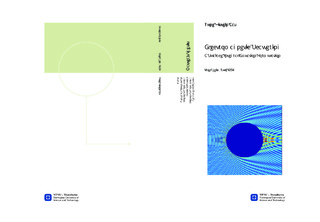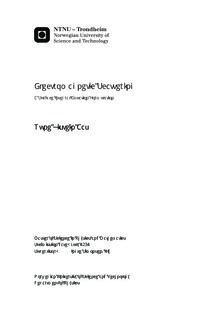| dc.contributor.advisor | Simonsen, Ingve | nb_NO |
| dc.contributor.author | Aas, Rune Øistein | nb_NO |
| dc.date.accessioned | 2014-12-19T13:17:53Z | |
| dc.date.available | 2014-12-19T13:17:53Z | |
| dc.date.created | 2012-11-08 | nb_NO |
| dc.date.issued | 2012 | nb_NO |
| dc.identifier | 566530 | nb_NO |
| dc.identifier | ntnudaim:7787 | nb_NO |
| dc.identifier.uri | http://hdl.handle.net/11250/246792 | |
| dc.description.abstract | A numerical approach to solving the problem of electromagnetic (EM) scattering on a single scatterer is studied. The problem involves calculating the total EM field in arbitrary observation points when a planar EM wave is scattered.The method considered is a surface integral equation (SIE) formulation involving the use of a dyadic Green's function. A theoretical derivation of the magnetic field integral equation (MFIE) and the electric field integral equation (EFIE) from Maxwell's equations are shown. The Method of Weighted Residuals (MWR) and Kirchoff's Approximation (KA) with their respective domains of application are studied as ways of estimating the surface current densities. A parallelized implementation of the SIE method including both the KA and the MWRis written using the FORTRAN language. The implementation is applied in three concrete versions of the scattering problem, all involving a spherical perfectly conducting scatterer, namely the cases of incoming wavelength much larger, much smaller and comparable with the radius of the scatterer. The problems are divided into two separate solution categories, separated by whether or not the KA is assumed valid. A recursive discretization algorithm was found to be superior to a Delaunay triangulationalgorithm due to less spread in element shape and area. The produced resultsfitted well considering the interference pattern and symmetry requirements with relative errors in the order of magnitude $10^{-5}$ and less. The case of having large wavelength compared to the radius was also compared with Rayleigh scattering theory considering the far field dependence on wavelenth, scattering angle and distance from the scatterer. This resulted in relative errors of 2.1 percent and less. The main advantage of the SIE method is only requiring the surface of the scatterer to be discretized thus saving computational time and memory compared to methods requiring discretization of volume. The method is also capable of producing accurate results for observation points arbitrary close to the scatterer surface. A brief discussion on how the program may be modified in order to extend its capabilities is also included. | nb_NO |
| dc.language | eng | nb_NO |
| dc.publisher | Institutt for fysikk | nb_NO |
| dc.subject | ntnudaim:7787 | no_NO |
| dc.subject | MTFYMA fysikk og matematikk | no_NO |
| dc.subject | Teknisk fysikk | no_NO |
| dc.title | Electromagnetic Scattering: A Surface Integral Equation Formulation | nb_NO |
| dc.type | Master thesis | nb_NO |
| dc.source.pagenumber | 159 | nb_NO |
| dc.contributor.department | Norges teknisk-naturvitenskapelige universitet, Fakultet for naturvitenskap og teknologi, Institutt for fysikk | nb_NO |

